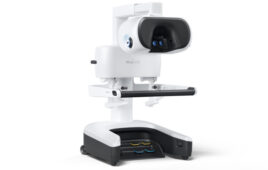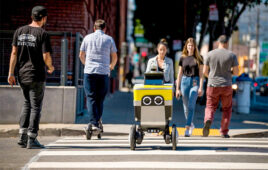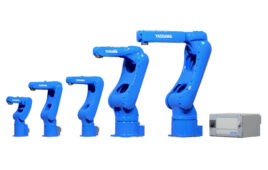 Keynotes | Speakers | Exhibitors | Register
Keynotes | Speakers | Exhibitors | Register
Companies in North America installed robots at a record pace in 2018, according the the Robotic Industries Association (RIA). The 35,880 units shipped in 2018 marked a 7 percent increase from 2017. And is the United States, specifically, robot shipments increased 15% to a record 28,478.
Most areas showed growth in robot shipments, including food and consumer goods (48%), plastics and rubber (37%), life sciences (31%), and electronics (22%). Overall robot shipments to non-automotive companies increased 41 percent to a record 16,702 units.
The only sector analyzed by the RIA that slowed was automotive, which dropped 12 percent to 19,178 units shipped in North America from the 21,732 units shipped in 2017. The automotive industry still accounted for 53 percent of total robot shipments in North America in 2018. But that is the lowest percentage share since 2010.
And many signs are pointing to a downshift in automotive sales, so automotive could continue to see a decline in overall robot shipments. After three straights years of growth – a record 17.6 million units were sold in 2016 – sales of new vehicles in the US have started to slide. The US is the second-largest automotive market in the world.
China, the world’s largest car market, saw annual automotive sales dip for the first time in nearly two decades in 2018. Auto sales in China fell 3 percent in 2018, but analysts don’t see things improving going forward. Automakers sold about 28 million vehicles in China in 2018.

Source: Axios
“While the automotive industry has always led the way in implementing robotics here in North America, we are quite pleased to see other industries continuing to realize the benefits of automation,” Jeff Burnstein, President of the Association for Advancing Automation (A3) said. “And as we’ve heard from our members and at shows such as Automate, these sales and shipments aren’t just to large, multinational companies anymore. Small and medium-sized companies are using robots to solve real-world challenges, which is helping them be more competitive on a global scale.”
While the US installed more robots than ever, it still has a ways to go it in terms of being the most automated country in the world. That title belongs to the Republic of Korea, according to the latest robot density numbers from the International Federation of Robotics (IFR) that measures the number of robots per 10,000 workers in an industry. The Republic of Korea, also known as South Korea, had a robot density of 631, which was eight-times more than the global average.
The US ranked seventh, according to the IFR’s analysis, with a robot density of 189 in 2016. The main drivers of growth were the “Made in the US” and re-shoring initiatives.

Countries with the most automation in manufacturing industries. (Credit: International Federation of Robotics)





Tell Us What You Think!